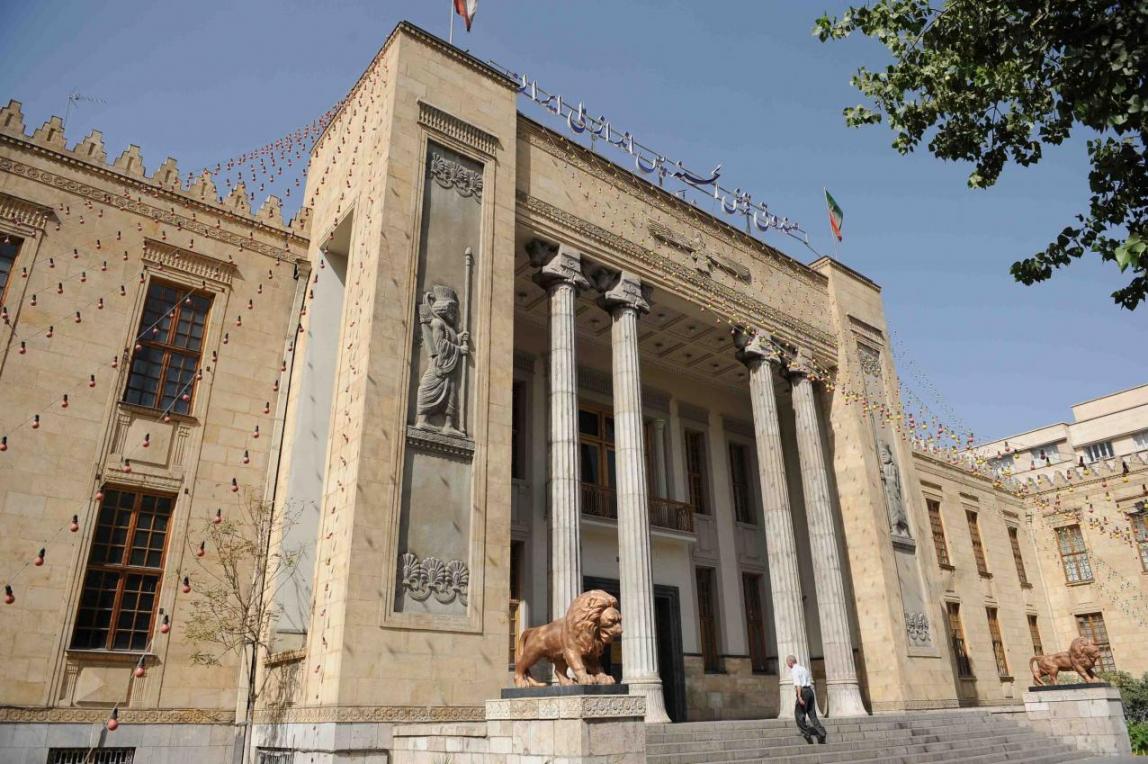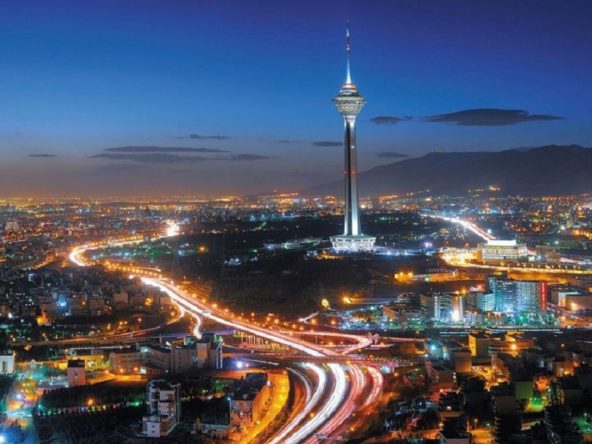Living in Iran has many difficulties for foreigners, From their children’s education to buying and selling property and cars. But one of their biggest concerns directly impacting their lives is opening a bank account for foreigners.
Imagine that in an era when all your purchases and sales are made through a bank card or money transfer is possible quickly with banking applications from inside the mobile phone, many foreigners do not have the possibility of using a bank teller, internet services, or having a bank deposit account.
Here, we will first discuss the banking issue in Iran, then introduce a list of domestic banks in Iran, and finally, check the conditions for opening an account for foreigners.
Banking in Iran
Following the Iranian Revolution, Iran’s banking system was transformed into an Islamic interest-free basis. As of 2010, there were seven large government-run commercial banks. As of March 2014, Iran’s banking assets comprised over a third of the total Islamic banking assets globally. They totaled 17,344 trillion rials, or US$523 billion at the free-market exchange rate, using central bank data, according to Reuters.
Since 2001 the Iranian Government has moved toward liberalizing the banking sector, although progress has been slow. In 1994 Bank Markazi (the central bank) authorized the creation of private credit institutions, and in 1998 authorized foreign banks (many of whom had already established representative offices in Tehran) to offer complete banking services in Iran’s free-trade zones. The central bank sought to follow this with the recapitalization and partial privatization of the existing commercial banks, seeking to liberalize the sector and encourage the development of a more competitive and efficient industry. State-owned banks are considered by many to be poorly functioning as financial intermediaries. Extensive regulations are in place, including controls on rates of return and subsidized credit for specific regions. The banking sector in Iran is viewed as a potential hedge against the removal of subsidies, as the plan is not expected to impact banks directly.
As of 2008, demand for investment banking services was limited. The economy remains dominated by the state; mergers and acquisitions are infrequent and tend to occur between state players, which do not require the advice of an international standard. The capital markets are at an early stage of development. “Privatization” through the bourse has tended to involve the sale of state-owned enterprises to other state actors. There is also a lack of sizeable independent private companies that could benefit from using the bourse to raise capital. As of 2009, there was no considerable corporate bond market. Electronic banking in Iran is developing rapidly. The needed $70 million initial capital for the opening of each electronic bank as approved by the Money and Credit Council compares with the $200 million required to establish a private bank in the country.
History
In 1960 the Central Bank of Iran (C.B.I., also known as Bank Markazi) was established as a banker for the Government, with responsibility for issuing currency. In 1972 legislation further defined the C.B.I.’s functions as a central bank responsible for national monetary policy. In the 1960s and 1970s, the expansion of economic activity fueled by oil revenues increased Iran’s financial resources, and subsequently, the demand for banking services grew exponentially. By 1977, some 36 banks (24 commercial and 12 specialized) with 8,275 branches were in operation. Their topline revenue has continually been trading finance and letters of credit.
After the Revolution, the Government nationalized domestic private banks and insurance companies. Bank law was changed under new interest-free Islamic banking regulations. The post-Revolution reduction in economic activity and financial resources required banks to consolidate. By 1982, this consolidation, in conformity with the Banking Nationalization Act, had reduced the number of banks to nine (six commercial and three specialized) and the number of branches to 6,581. Subsequently, the system expanded gradually.
The Government began privatizing the banking sector in 2001 when licenses were issued to two new privately owned banks.
In 2011, seven state-owned and private Iranian banks were involved in a USD 2.8-billion embezzlement case, which involved forging documents to secure multibillion-dollar loans and purchase state-owned companies.
In 2014, Iranian authorities arrested 12 people for embezzlement of more than $4.5 billion (3.6 billion euros) from the Kerman branch of Tejarat Bank from 2009 until their arrest in 2013.
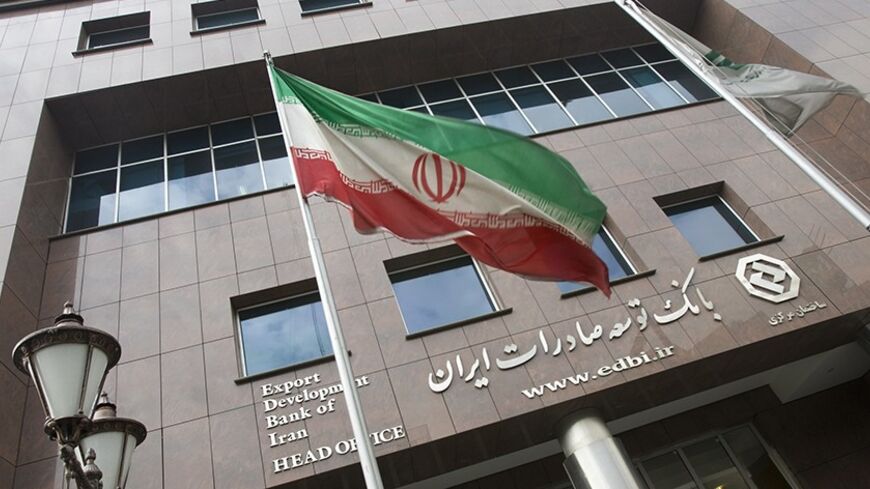
Types of financial institutions
As of 2011, about 80% of the country’s wealth was deposited with state banks and the remaining 20% with private banks. Iran’s financial institutions are:
- Banks
- Finance & Credit Institutions
- “Gharzolhasaneh” Funds (Islamic non-profit granting funds -replicate many of the functions of smaller-scale credit providers)
Islamic banking
In theory, Iranian banks use “provisional” interest-based transactions but retain the accounting standards of conventional banking. In 2009, Iranian banks accounted for about 40 percent of the total assets of the world’s top 100 Islamic banks. Three of the leading four Islamic banks are based there; Bank Melli Iran, with assets of $45.5 billion, came first, followed by Saudi Arabia’s Al-Rajhi Bank, Bank Mellat with $39.7 billion, and Bank Saderat Iran with $39.3 billion. “Iranian banks are still the predominant Islamic banking players, holding seven out of the top 10 ranks and 12 of the 100,” the Asian Banker research group reported. According to CIMB Group Holdings, Islamic finance is the fastest-growing segment of the global financial system. Sales of Islamic bonds were predicted to rise by 24 percent to $25 billion in 2010. Yet, most of Iran’s financial resources are directed at trading, smuggling, and speculation instead of production and manufacturing.
Commercial banks
Commercial banks are authorized to accept checking and savings deposits and term investment deposits, and they are allowed to use promotional methods to attract deposits. Banks may use term investment deposits in joint ventures, direct investments, and limited trade partnerships (except to underwrite imports). However, commercial banks are prohibited from investing in the production of luxury and nonessential consumer goods. Commercial banks also may engage in authorized banking operations with state-owned institutions, government-affiliated organizations, and public corporations. The funds received as commissions, fees, and returns constitute bank income and cannot be divided among depositors.[11] According to the Central Bank of Iran, the financial sector has about $260 billion of liquidity or 65% of the G.D.P. of Iran’s economy.
Banking assets and liabilities
Bank Melli, Saderat, and Sepah are Iran’s three largest banks. The Government plans to clear government arrears, recapitalize banks and strengthen supervisory powers (2016). I.M.F. estimates public debt could be as high as 40% of G.D.P. once government arrears to the private sector are recognized.
List of Iranian central banks
In 2010, The Banker listed 13 Iranian banks in the “top 1,000 banks worldwide”. In 2005 the Iranian banking system consisted of a central bank, ten government-owned commercial and specialized banks, and four private commercial banks. In 2004 there were 13,952 retail bank branches and 53 foreign branches. Specialized banks had 2,663 units. As of 2016, banking in Iran employs more than 200,000 staff in more than 23,000 banks and credit institutions nationwide, of which 10,000 branches need to be shed, according to bank experts.
Melli Bank
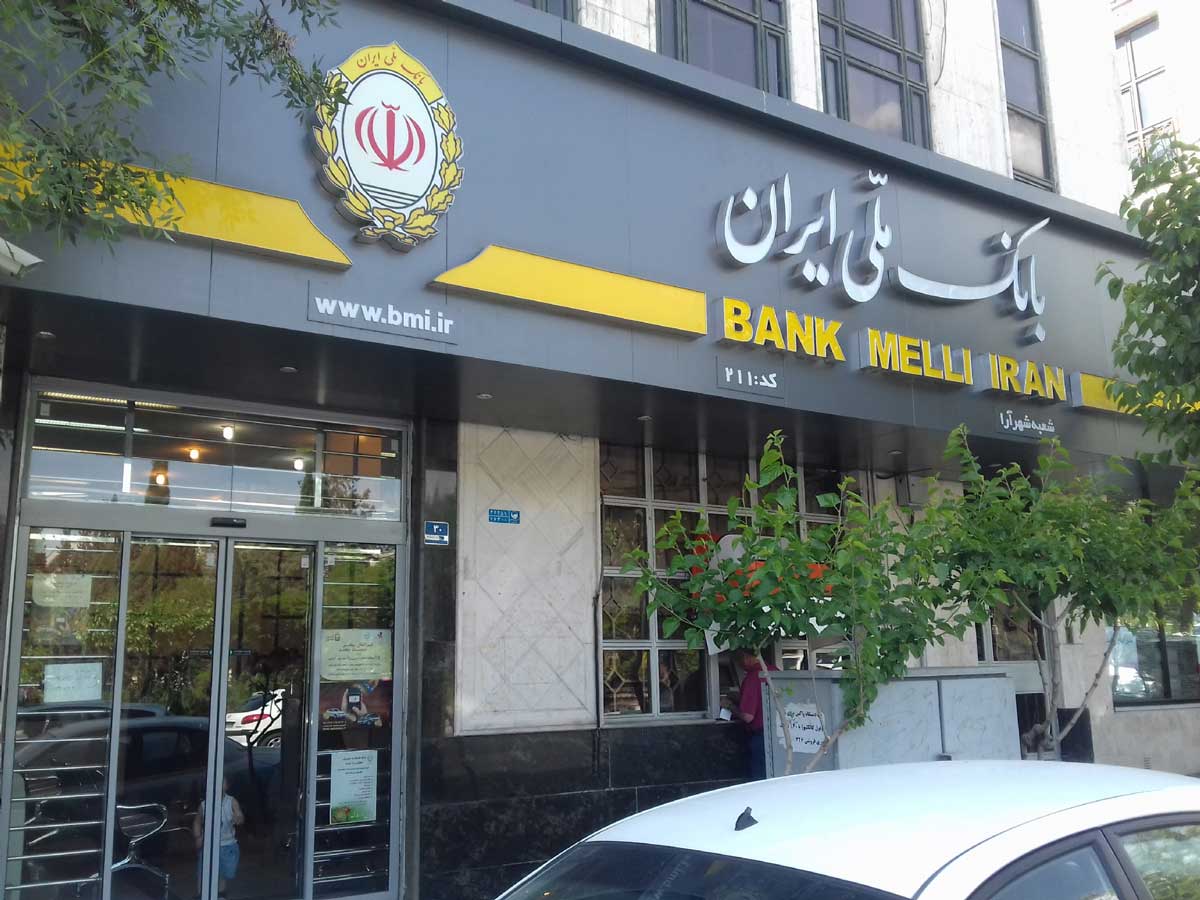
After the end of the First World War and the departure of the occupiers from Iran, the law establishing the National Bank of Iran was finally approved by the parliament in the session dated May 14, 1927. The parliament’s finance committee approved the bank’s charter on July 14, 1928, and on Tuesday, September 20, 1928, the bank National Iran officially started its work in Tehran.
The first C.E.O. of National Bank, Dr. Kurt Lenidenblatt, and his deputy Fogel came to Iran with 70 experts from Germany.
According to the bank’s charter, the National Bank of Iran was recognized as a joint-stock company with a legal personality and was subject to commercial laws.
Because there were no banking experts in Iran then, according to the law, it was allowed to hire Swiss or German nationals to run the bank. The number of employees of the bank, both Iranian and German, did not exceed 27 people on an opening day. Currently, the number of employees of the National Bank of Iran is over 45 thousand people.
At the beginning of the establishment of the bank, in addition to the central branch, two branches were established in Tehran Bazaar and Bushehr Port, the most important commercial port in Iran then.
The first representative office of the bank abroad was established in Hamburg in 1948.
On March 22, 1931, the right to publish banknotes was approved by the National Assembly. It was officially granted to the National Bank of Iran for ten years, which could be renewed automatically. In April 1932, the first banknote of the National Bank of Iran was published.
In 1939, according to the law, to encourage and encourage people to save, the savings fund of the National Bank of Iran was established, which is considered one of the active units of the bank after the establishment of the Islamic banking system in the form of Gharzolhasaneh savings.
Until 1959, the National Bank of Iran had the central bank’s duties, such as the exclusive right to issue banknotes and regulate the country’s money flow. And started its activity.
After the victory of the Islamic Revolution, after the approval of the legal bill of interest-free banking operations in 1983 and its notification to the banks, guidelines and executive regulations were prepared. This law was implemented in the National Bank of Iran on April 1, 1984.
It has been 86 years since establishing the National Bank of Iran.
Phone: +982164140
Website: https://www.bmi.ir
Sepah Bank
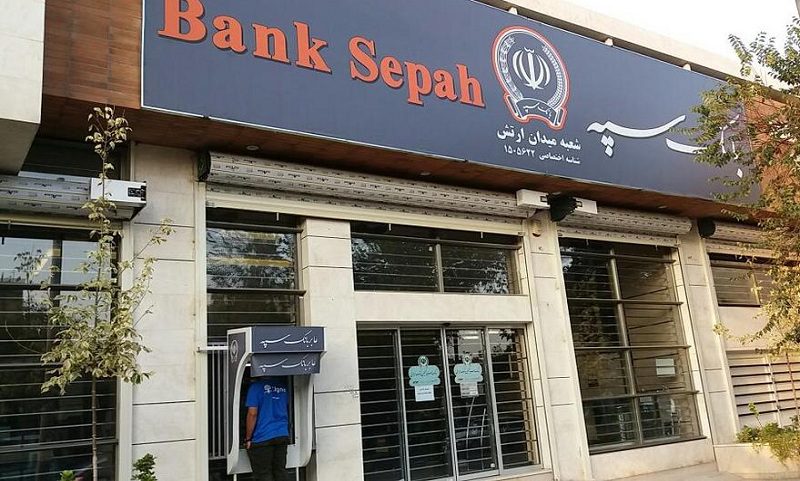
The first Iranian bank, which was established on May 14, 1925, in this year, there was still no peace throughout the country, public activities in various social affairs, and the tremendous influence of economic and commercial factors in the country’s political life was not evident.
This bank was established in a limited area – several shops – and on March 24 of the same year, the first branch of Sepeh Bank was opened in Rasht. In the international arena, Sepe Bank also provides banking services by establishing banking units in countries such as Germany, Italy, France, and Sepe International Bank of England.
Sepeh Bank is one of Iran’s state banks.
Phone: +982188207221
Website: https://www.banksepah.ir/
Mellat Bank
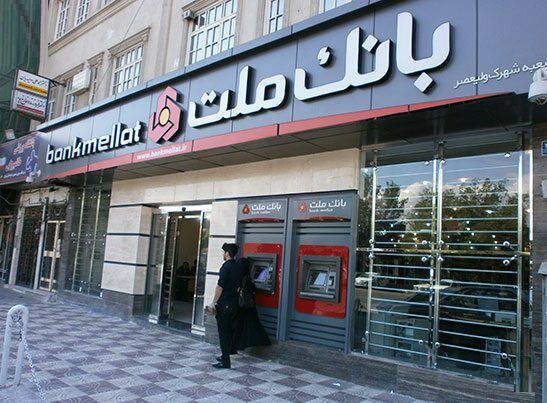
Bank Mellat, according to the resolution dated December 29, 1979, of the General Assembly of Banks from the merger of Tehran, Dariush, International Iran, Omran, Iran Insurance, Iran and Arab, Pars, Cooperative Credits and Distribution, Foreign Trade, and Farhangian Banks on July 31, 1980, formed in the Registration Office The companies were registered. The administrative operations of the bank started on the same date.
Based on the Extraordinary General Assembly of Banks (dated April 17, 2007) and the approval letter of the Board of Ministers (dated August 2, 2006), the legal personality of Bank Mellat was converted into a public stock.
Phone: +982182961
Website: https://www.bankmellat.ir/
Tejarat Bank
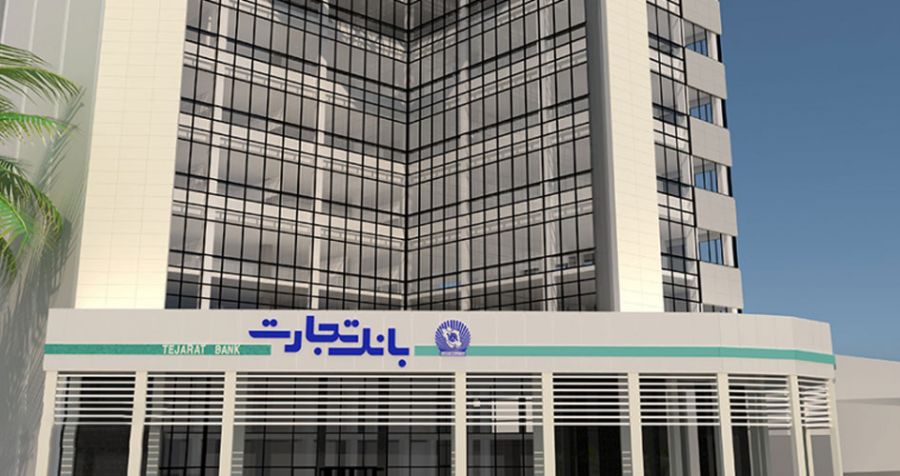
Tejarat Bank is one of the oldest active banks in the country’s banking network; according to the resolution dated 25 Mehr 1980 of the General Assembly of Banks of the merger of 11 banks of Iran and England, International of Iran and Japan, Commercial of Iran and the Netherlands, Iran and the Middle East, Credits of Iran, Commercial of Iran, Iranshahr, Iran Industries, Shahriar, Iranian and Work was established on December 29, 1979, and was registered as a private limited company owned by the Government of the Islamic Republic of Iran in the Companies Registration Department, and then in 1982 Iran and Russian Bank joined it.
Following the announcement of the general policies of Article 44 of the Constitution, the shares of Bank Tejarat, as one of the state banks subject to transfer, were ready to be offered on the stock exchange. The change of the legal personality of the bank to a public stock and the replacement of the new statutes were registered and announced in the registration office of companies and non-commercial institutions on March 3, 2018. The bank’s shares were admitted to the stock exchange on May 9, 2018.
Tejarat Bank was ranked 18th in the list of the top 100 companies in Iran in 2013. According to the performance evaluation report and ranking of 100 companies during the years 2008 to 2010, Tejarat Bank is ranked 13th, 13th, and 10th, respectively.
Phone: +981554
Website: https://www.tejaratbank.ir/
Saderat Bank
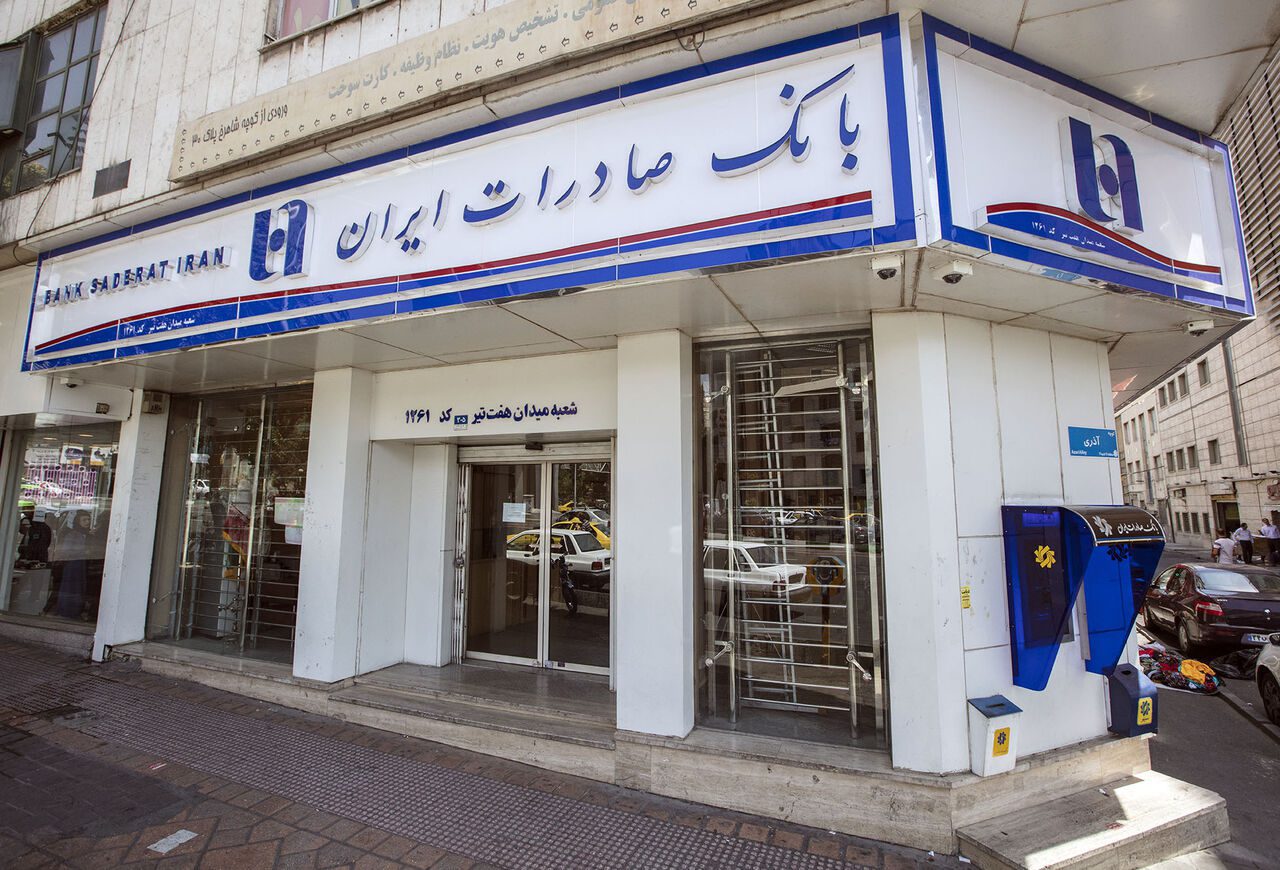
Saderat Bank of Iran was established as a private bank in the form of public shares under the name “Sadaret and Mines Bank of Iran” on September 15, 1952, in the Companies Registration Office and started working on November 22, 1952, with 13 employees. The first branch of this bank opened in the Tehran market on November 22, 1952.
The first foreign branch of Saderat was established in 1961 in Hamburg, Germany, and after that, foreign branches of this bank were opened one after another. Saderat Bank of Iran owns independent banks abroad (Sedarat Bank of Tashkent, London P.L.C., Future Bank of Bahrain, and Arian Bank of Afghanistan). In addition, the banking units belonging to this bank in Europe and Asia are more than 20.
Saderat Bank of Iran currently holds the title of the largest bank branch network in Iran, with more than 2700 active branches.
After the victory of the Islamic Revolution, Iran Export Bank was declared “national” in the implementation of the resolution of the Islamic Council in 1980. After 30 years, in line with the performance of Article 44 of the Constitution, it joined the Jirga of Private Banks on June 19, 2009.
Phone: +982184761
Website: https://www.bsi.ir/
Pasargad Bank
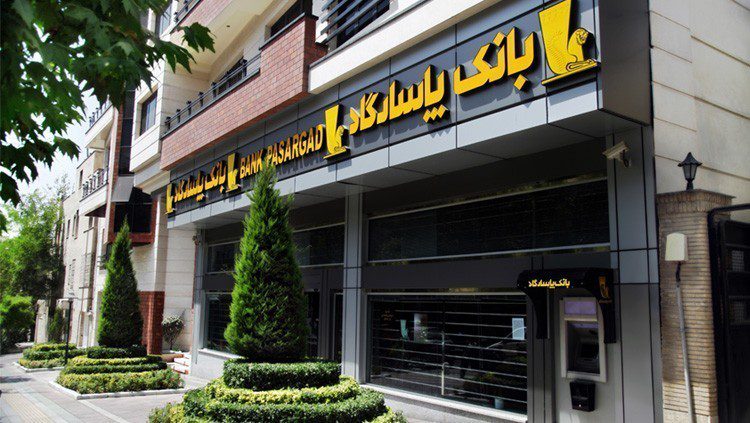
Pasargad Bank was established under the license dated 9/13/2005 of the Central Bank of the Islamic Republic of Iran.
The bank’s subscription was done on August 11, 2005, the founding meeting was held on September 5, 2005, the establishment license was received on September 13, 2005, and the bank’s operation license was obtained on September 22, 2005.
The bank’s first branch was officially opened in holy Mashhad on December 23, 2004, at the same time as the birthday of Imam Reza (AS).
Phone: +982182890
Website: https://www.bpi.ir/
Saman Bank
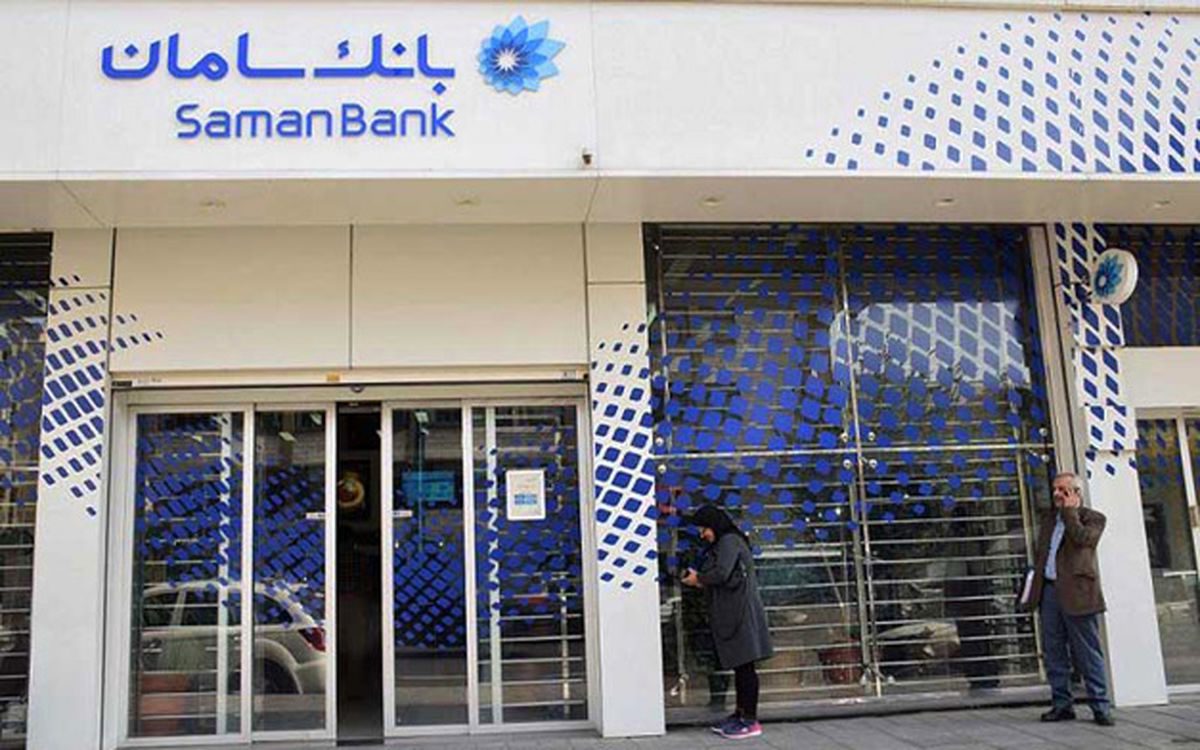
Saman Bank started its activity in September 2018 as the first financial and credit institution licensed by the Central Bank of Iran under the name “Saman Economy.”
Less than three years later, in September 2013, it received the necessary license to provide banking services from the Central Bank of the Islamic Republic of Iran. As the third private bank in the country, it entered a new process.
Phone: +98216422
Website: https://www.sb24.ir/
Parsian Bank
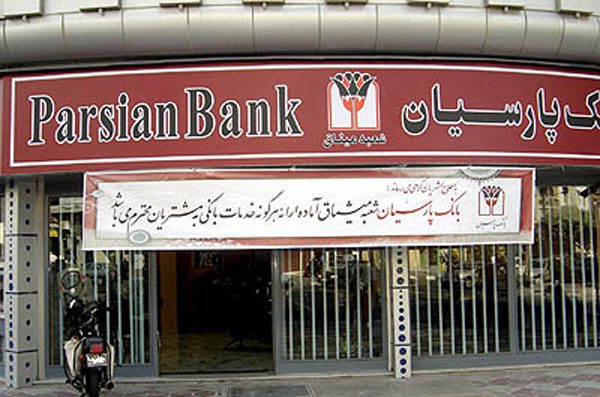
Parsian Bank, as a public joint-stock company owned by non-governmental persons and in August 2001, took action to subscribe to shares and form a founding assembly. After completing the formalities and officially registering the bank on 9/06/2001 in the Companies and Institutions Registration Department, Tehran’s non-commercial company received the license to start operating from the Central Bank of the Islamic Republic of Iran on September 26, 2010. And the provision of Bank Parsian services began in March 2018.
Phone: +982181151000
Website: https://www.parsian-bank.com/
Maskan Bank
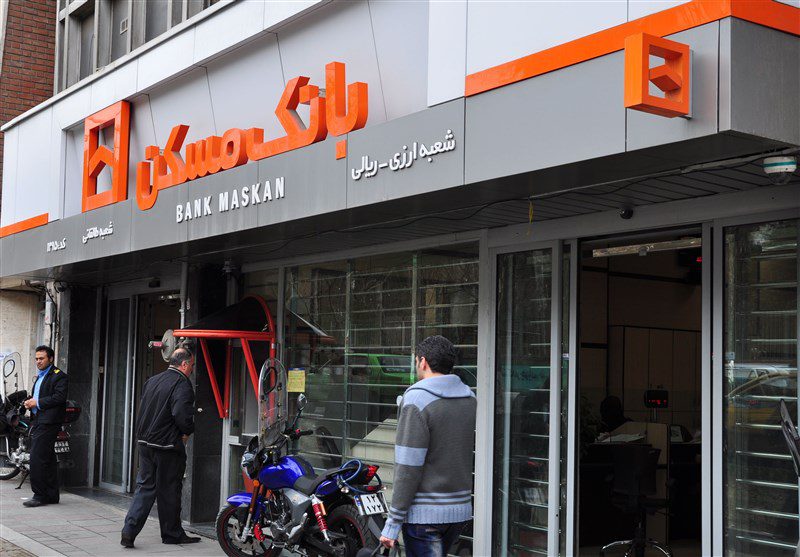
The history of Maskan Bank goes back to the year 1317 and its establishment, and now its main focus is on providing retail banking services, investment banking, and housing loans.
|The central branch of this bank is located in Tehran. Maskan Bank started its activity on January 25, 1938, with the establishment of the “Mortgage Bank of Iran” as a bank specializing in housing and construction, with the participation of the Ministry of Finance and the National Bank of Iran. The subject of the activity of the Housing Bank was the banking issues related to housing loans. The central part of the activities included:
- The payment of facilities against the mortgage of immovable property for buying.
- Building and completing.
- Repairing.
- Granting credit to construction companies.
After the Revolution of 1978, Maskan Bank in 1979, based on the legal bill for the administration of banking affairs approved by the Islamic Revolutionary Council on 07/6/1979, from the merger of Iran’s mortgage banks, construction, construction investment company of banks of Iran and other savings and mortgage companies of Korosh, Ekbatan, Pasargad, in Tehran and the cities of Mashhad, Tabriz, Shiraz, Isfahan, Ahvaz, Gilan, Hamadan, Kermanshah, Mazandaran, Gorgan, Semnan, and Abadan.
The new combination, which began its banking activities in the construction sector under Maskan Bank, was the Iran Mortgage Bank in all respects. Maskan Bank is the continuation of Iran Mortgage Bank in a new form and has been engaged in house building since 1944.
In addition to all modern banking services, payment of all types of housing purchases, construction and repair facilities is the privilege of Maskan Bank’s special savings fund (with deposit), and the essential activity of this bank is in the housing sector. Other activities of this bank are defined in line with the objectives of the Central Bank of Iran, like other banks.
Phone: +981830
Website: https://bank-maskan.ir/
Keshavarzi Bank
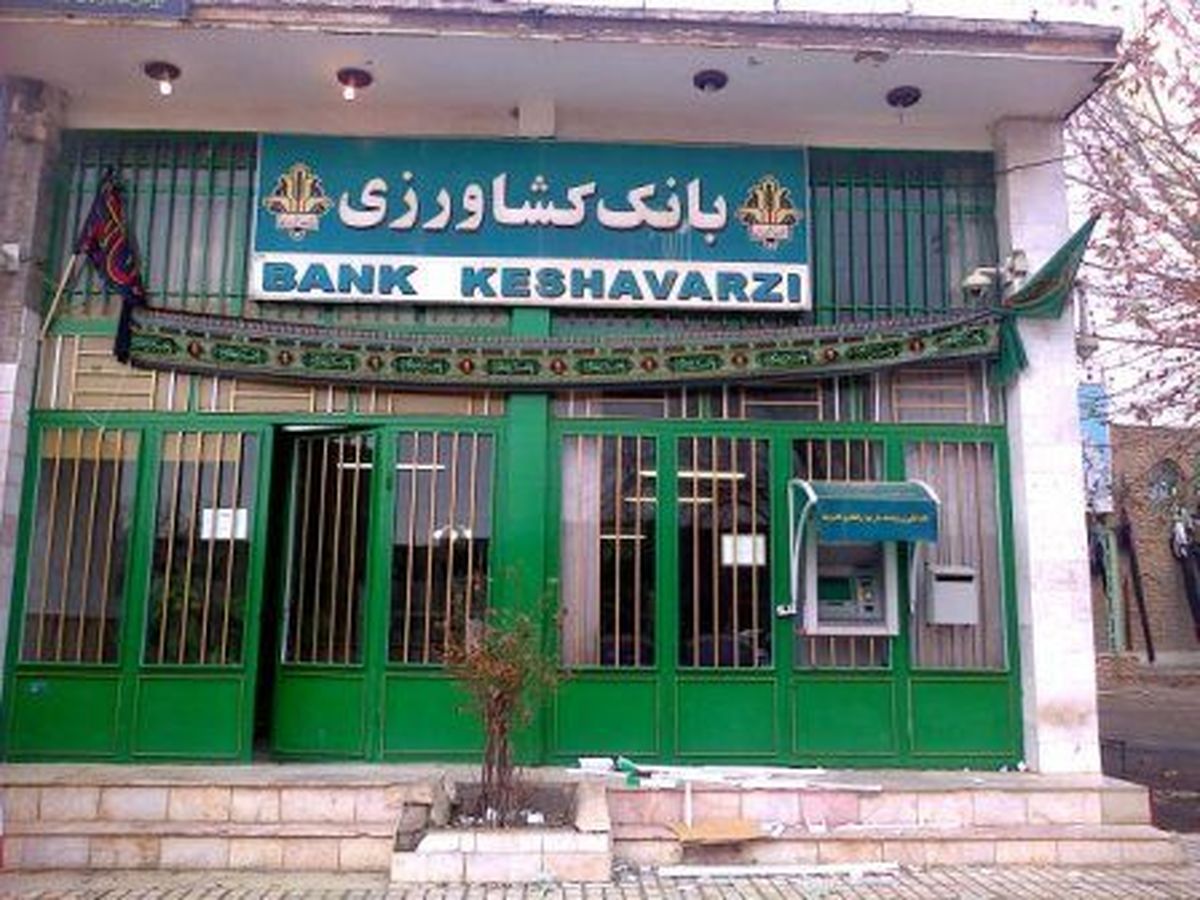
Agricultural Bank is one of the specialized banks of the country, primarily active in the agricultural sector and its sub-sectors. This bank was established on June 21, 1933. Currently, with the support of eighty-two years of service experience, it is active as a leading bank in the field of providing banking services to all people throughout the country.
In some periods, the name of the bank has changed. At some times, its statutes and missions have also changed in line with the financing of the agricultural sector and its sub-sectors as one of the sub-sectors that affect the country’s economy and the engine of production that leads to economic growth—been completed.
Phone: +982181301
Website: https://www.bki.ir/
Shahr Bank
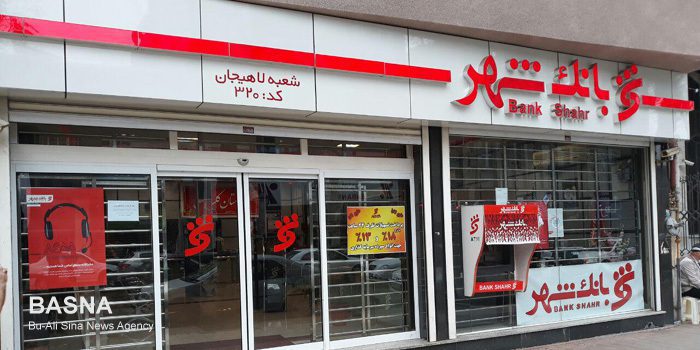
The financial and credit institution of the city officially started its establishment and activity in 2007 with the license of the central bank and with the shareholding of the municipalities of Tehran and other big cities of the country.
The duties of this bank are defined as providing municipalities with extensive credits, providing liquidity and capital, and covering the city’s costs and expenses.
On February 21, 2008, this institution entered a new stage of its activity as one of the private banks in the country.
The principal shareholders of Bank Shahr are:
Tehran Municipality, Shiraz Municipality, Production and Distribution Cooperative Company of Tehran Municipality Employees, Isfahan Municipality, Tehran Municipality Employees Reserve Fund, Qazvin Municipality, Mashhad Municipality, Qom Municipality, Karaj Municipality, Ahvaz Municipality, Tabriz Municipality.
The bank’s floating shares amount to 30%, and many employees of the subordinate units of Tehran municipality and employees of metropolitan cities and ordinary people make up Bank Shahr’s shareholders.
Phone: +98218655
Website: https://shahr-bank.ir/
Foreign banks
According to C.B.I., five offices of foreign banks (as of May 2012) operate in Tehran and Kish free trade zone.
Article 44 (fifth clause) of the Iranian Constitution Law had placed banking activities exclusively in the hands of the Government. In tandem with the Law on Usury Free Banking Operations, these two measures effectively blocked foreign banking operations from conducting business in mainland Iran. In 2009 the Constitution was to be amended to allow foreign banks to operate generally in mainland Iran.
As of 2015, there is no limitation on the activities of foreign banks in Iranian free economic zones. They may also open branches and representative offices on the mainland or hold 40% shares of an independent unit.
Foreign branches
The minimum capitalization for establishing a foreign bank branch in Iran is 5m. A handful of foreign bank branches and representative offices in the country were allowed to undertake administrative and coordination activities but were not permitted to open customer accounts inside the territory of mainland Iran, receive deposits or extend normative facilities.
Until now, foreign banks in Iran have acted as the bridge between foreign companies from the same mother country in the host country. Foreign companies learned of Iran’s economic and investment opportunities through these foreign banks in the country.
In 2010, the Iranian Government lifted a cap on the percentage of shares in Iranian banks that a foreign individual or company can own. The original law, which applied to both Iranians and foreigners, restricted the number of shares in a bank that a single company could own to 10 percent and an individual to 5 percent. Iranian ownership of banks is still subject to limits.
According to the new rules, only the Iranian Government has the authority to form joint banks with foreign entities. Foreign entities can now hold over ten percent of the shares in cooperative banks with Iran, but their claims cannot exceed more than 49 percent. Under the same provisions, foreign individuals and entities with at least 51 percent Iranian ownership shall be considered Iranian companies.
Mainland activities
For the first time since the 1979 Islamic Revolution, Iran is set to allow foreign banks to establish branches in the country and engage in normal banking operations.
In 2008, Bank Markazi (the central bank) formally officiated over the opening of Iran’s first foreign bank branch in the capital, Tehran. The Iran-Europe Commercial Bank is registered in Hamburg, Germany, but is majority owned by the Bank of Industry and Mines of Iran. The second foreign bank to be created in Iran was the joint Iranian-Venezuelan bank. As of 2010, similar projects exist in countries such as Russia, Belarus, and Egypt.
In 2009, four U.S. banks, including Citibank and Goldman Sachs, applied to open a branch in Iran. The banks formally requested the Central Bank of Iran (C.B.I.) to establish a unit. If the Majlis and C.B.I. approve their request, these four banks will set up a temporary branch in an Iranian free trade zone. And if they can work according to the Iranian banking law (i.e., usury-free banking), they will also be allowed to open branches in Tehran and other cities.
In 2010, Tehran Times reported [instead?] that the banks filing the requests for working in Iran were from “states in the Persian Gulf and the Middle East regions as well as Asia.”
Free trade zones
The minimum capitalization for a bank operating in Iran’s F.T.Z. is $100 million (2016). Foreign banks could work in Iran’s free trade zone areas for many years, and there are three such banks on Iran’s Kish Island in the Persian Gulf (2012). Iran’s Majlis (parliament) has ratified the bill to establish domestic-foreign joint banks and insurance companies in free trade zones.
Sanctions
The United States is attempting to isolate Iran from the international financial and commercial system to promote policy change in Iran regarding its nuclear program and purported terror financing.
In 2006, Swiss banks UBS and Credit Suisse, ABN AMRO, and HSBC – decided to end their operations in Iran. UBS announced that it had stopped doing business with Iran because of the company’s economic and risk analysis of the situation in the country. UBS stated that it would no longer deal with individuals, companies, or state institutions such as the Central Bank of Iran.
Bank Melli, Saderat, and Sepah are Iran’s three largest banks. They have been hit with U.N. and U.S. sanctions over the past two years over alleged links with Iran’s nuclear and missile programs (2008). Malaysia and U.A.E. are also cooperating with the United States in implementing international sanctions against Iran.
On October 8, 2020, the U.S. imposed further sanctions on Iran’s financial sector, targeting 18 Iranian banks. The banks targeted are Amin Investment Bank, Bank Keshavarzi Iran, Bank Maskan, Bank Refah Kargaran, Bank-e Shahr, Eghtesad Novin Bank, Gharzolhasaneh Resalat Bank, Hekmat Iranian Bank, Iran Zamin Bank, Karafarin Bank, Khavarmianeh Bank, Mehr Iran Credit Union Bank, Pasargad Bank, Saman Bank, Sarmayeh Bank, Tosee Taavon Bank, Tourism Bank and Islamic Regional Cooperation Bank.
Account opening conditions for foreigners
A mandatory condition for opening an account for foreign nationals is to have a passport. But only having this identity document is not enough, and they must have other requirements to open an account. So, the first step in banking is to get a learning code. Getting a learning code is about matching personal information and authentication. In addition to these documents, some banks consider the conditions for opening an account for foreign nationals not to have a history of bounced checks and bank debts.
Foreign nationals with an Amish card (temporary exit certificate) can only open a bank account or account book. The bank does not give these people debit cards and internet banking services. If Afghan nationals have expired passports, their debit cards will be blocked until they get a new passport. The necessary conditions for opening an account for foreign nationals are as follows:
- 18 years of age is all the requirement to open an account
- For foreign legal entities, company registration in Iran is mandatory, and they must be allowed to open an account in the articles of association.
- Having a valid passport and permanent residence permit
- Having a permanent residence and providing a property document or electricity bill and lease to prove it
- Giving an obligation not to have financial violations in other countries
- Not having a history of bounced checks or bank debt
- Obtaining approval from the Ministry of Foreign Affairs for embassies, organizations, and international institutions.
- Get universal code
Documents required to open an account for foreign nationals
Foreign nationals with a residence permit and those with the refugee booklet documents issued by the police force or the identity card and temporary exit card (Amish) issued by the Ministry of Interior can open a bank account by bringing the following documents. Do:
- Filling the account opening form
- Carrying all identification documents along with their copies
- Providing comprehensive code
- Having two bank customers as representatives. It is also acceptable to submit a written letter of introduction from foreign embassies or reputable foreign banks and financial institutions.
Which banks open accounts for citizens?
Bank Mellat, Bank Tejarat, Bank Saderat, and Bank Maskan usually have a more straightforward procedure for opening foreign nationals’ accounts. Gharzolhasaneh’s savings and term deposit accounts are two types of bank accounts that foreigners can open.




